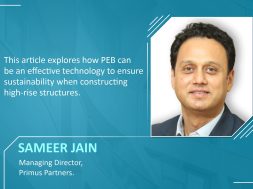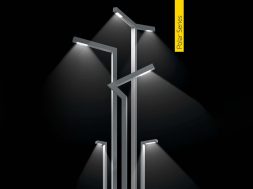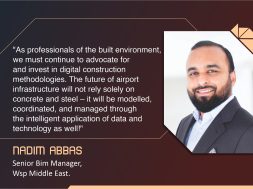Greener route of PEB in high-rise construction

This article explores how PEB can be an effective technology to ensure sustainability when constructing high-rise structures.
High-rise buildings have long been deemed necessary for metropolitan growth, but their construction presents several critical environmental issues for most cities. For instance, the traditional methods used to construct such tall buildings result in significant emissions, with dust from construction activities alone contributing to nearly 30 percent of the total air pollution in regions like Delhi-NCR. The extent of pollution gets much higher during winter; such construction activities are often barred in metropolitan cities during the winter. The 2022 Global Status Report for Buildings and Construction finds that the sector accounted for around 37 percent of energy and process-related CO2 emissions in 2021, posing a tremendous need for sustainable alternatives.
Prefabricated Engineering Buildings (PEB) offer large environmental benefits. They consist of offsite production of building elements, requiring only transportation and onsite assembly. The process significantly reduces the amount of dust and emissions released during traditional construction, in addition to material waste. When conventional methods of construction are employed, almost 30 percent of raw materials are wasted. However, employing PEB technology reduces this to a mere 1.8 percent, according to the Waste & Resources Action Program (WRAP).
As PEBs minimise energy consumption and emissions, one of the environmental benefits attached to them is the proven record of energy and emission savings. According to the Environmental Protection Agency, prefabrication reduces energy usage by as much as 67 percent. Studies by the Modular Building Institute and MDPI show that PEB reduces carbon emissions by up to 45 percent. The studies also mention that PEB has a per square meter reduction of 86 kg of carbon compared to conventional building methods. These indexes would be very important for high-rise building construction where the environmental impact is non-linearly multiplied by the scale of the project.

Furthermore, construction for PEBs reduces onsite activities, which cuts down PM2.5 emissions, one of the prominent contributors to the air quality crisis. Since much of the construction activity occurs offsite in controlled environments, the usual dust and noise pollution associated with high-rise building projects is vastly reduced. This enhances public health and the local environment for improved air quality and lesser disruption.
PEBs also require shorter execution times for projects. Prefabrication allows faster assembly than traditional construction methods, thus reducing the time spent onsite and related environmental impacts. This swift execution is hugely beneficial for urban settings as it ensures minimal interruption in the area concerned. Real estate, infrastructure, and businesses will benefit from PEBs, as they save time and cost and cause less delay. In regions like Delhi-NCR, where construction bans can postpone projects by months or even years, PEB technology presents a solution that keeps the project on schedule while meeting sustainability goals.
Reusability provides long-term sustainability, and prefabricated materials are reusable. This cuts off the need for repeated procurement of raw materials and reduces the waste produced. Thus, increasing PEBs makes the construction process faster, cleaner, and more resource-efficient than previously envisioned, perfectly in line with the global goals of greener cities.
PEB solutions present a new face of sustainability in high-rise construction. Reducing emissions, minimising waste, and accelerating project timelines make PEBs a greener route compared to conventional construction methods. In urban centres and cities where pollution and environmental issues are pressing, sustainable urbanisation can be achieved with a significant change towards employing PEBs.
For more details, visit: https://www.primuspartners.in/
Cookie Consent
We use cookies to personalize your experience. By continuing to visit this website you agree to our Terms & Conditions, Privacy Policy and Cookie Policy.










